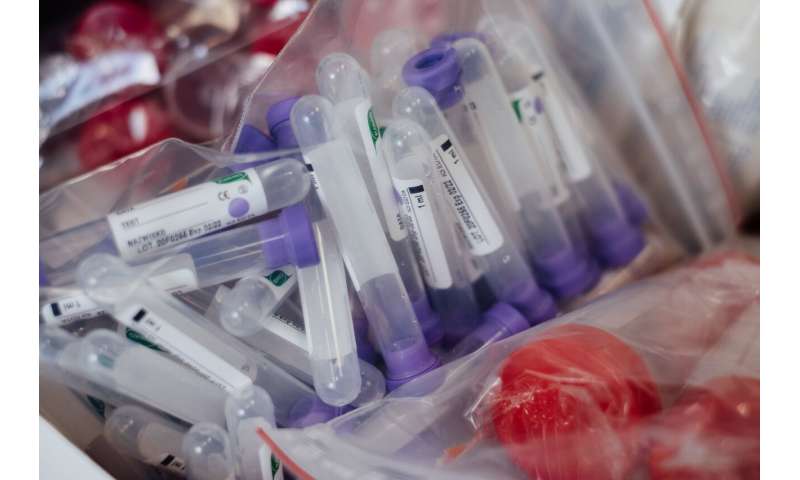Serology study provides critical insight into COVID-19 immune response


As vaccine trials progress and public health officials brace for a rise in COVID-19 cases, understanding how the body defends itself from SARS-CoV-2 infection is essential. New research, published in Clinical and Translational Immunology, provides a clearer picture of the protective antibodies induced by this virus and their role in serious illness and what’s needed for full protection.
Based on a study of serum samples collected from 32 hospitalized COVID-19 patients and from 17 asymptomatic subjects who had antibodies to SARS-CoV-2, the virus that causes COVID-19, University of Vermont (UVM) immunologist Sean Diehl, Ph.D., and colleagues found that the level of antibodies correlated with disease severity.
“As this was early in the pandemic, some expected that sicker patients would have less of these antibodies, but we found the opposite,” says Diehl, who believes that “higher antibody levels in sicker patients is likely reflective of the presumed higher viral load in sicker patients.” This finding has also been confirmed by others in cohorts of COVID-19 patients in Boston and Seattle.
Among the hospitalized COVID-19 patients, there were 13 sicker patients requiring longer-term intensive care unit (ICU) care whose antibody levels became higher the longer they remained in the ICU in comparison to the COVID-19 patients that did not require ICU admission. The researchers also found higher antibody levels in general in hospitalized COVID-19 patients compared to those who had previously had exposure to SARS-CoV-2, some of whom had developed mild disease, but not required hospitalization. These samples were collected from serological surveys of 174 ICU health care workers in collaboration with UVM Professor Gary An, M.D., and as part of a community serosurvey of 454 subjects in collaboration with UVM Associate Professor Eline van den Broek-Altenburg, Ph.D.
Using a serological assay developed by Diehl’s colleague Florian Krammer, Ph.D., of Mount Sinai’s Icahn School of Medicine, the researchers measured serum antibodies that target a specific domain of the spike protein of the SARS-CoV-2 virus—the so-called receptor binding domain. Antibodies targeting this domain, abbreviated “RBD-S,” can prevent the virus from infecting cells; for that reason, it is considered the best candidate for a protective antibody response—a key goal of vaccine development.
According to Diehl, not all serological tests currently in use specifically measure antibodies that recognize the RBD; data from others suggest that up to 90 percent of the virus neutralization activity (i.e., protective function) seen in COVID-19 serum is due to RBD antibodies. There is limited data from other serological tests that are not RBD-focused to support that these antibodies could be protective.
For this study, the UVM team first defined when, following COVID symptom onset, antibodies arise, determining that activity can occur in as little as five days and remain high even six weeks later. In addition, they discovered no differences in anti-RBD-S antibodies in men and women, despite evidence that men are more likely to die from COVID-19 than women. Surprisingly, many elderly patients—those 80 years old and above—produced as strong an antibody response as the 40-year-olds in the study, which was inconsistent with the common belief that the elderly have a weaker immune response. Another insight was that the few individuals who died did not have different level of antibodies versus those who recovered.
“This is actually good news,” says Diehl. “We think this means that a vaccine may not need to achieve the highest possible RBD-S antibody levels because those outpatient COVID-19 patients who developed intermediate antibody levels did not develop severe disease and did not require hospitalization.”
The researchers acknowledge that multiple arms of the immune response are likely needed for full protection and say that performing broad antibody testing is needed to identify the levels at which a person is protected and to determine how long these antibodies last.
Source: Read Full Article